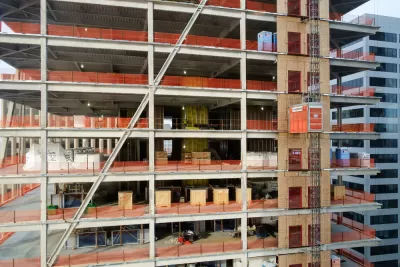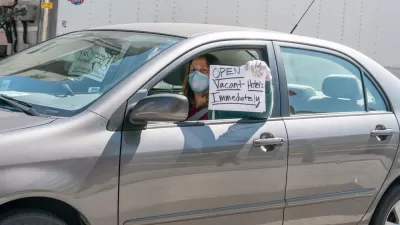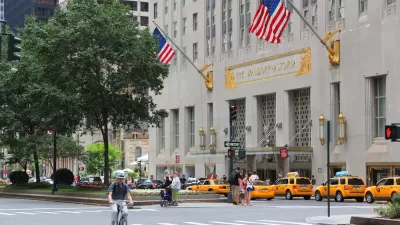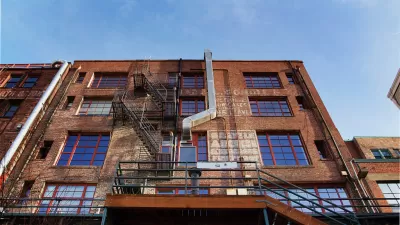Seattle has added 2,550 hotel rooms since the beginning of 2017, with another 3,000 on the way by 2021.

Paul Roberts reports on booming hotel construction in Seattle, where 3,000 more rooms are expected to enter the market by 2021.
The story is timed to coincide with the December opening of the Hyatt Regency at Eighth Avenue and Howell Street, which will become the largest hotel in Washington State.
"With its 1,260 rooms, spacious conference facilities, and proximity to the planned expansion of the Washington State Convention Center, the Hyatt is key to Seattle’s ambitions to play in the big leagues of the convention business and bid for massive corporate events that only a handful of American cities can currently handle," adds Roberts.
While convention center-based economic development is a familiar and hotly-debated proposition in cities all over country, Seattle has a larger context beyond the walls of the Hyatt to consider.
"By the time the Hyatt opens, Seattle’s downtown hotel market will have grown by a stunning 2,550 rooms since January 2017, or more than five times the number of rooms the city added in the two previous years, according to Visit Seattle, which markets the city’s hospitality and tourism sectors. Regionwide, there are roughly 65 new or under-development hotels across King, Snohomish and Pierce counties," explains Roberts.
The reality of an oversaturated market is settling in. Average revenue per available room, the standard metric for the hotel industry's well being, has leveled off or even declined since 2017, reports Roberts.
FULL STORY: As Seattle area keeps building hotels, there soon may be too much room at the inn

Manufactured Crisis: Losing the Nation’s Largest Source of Unsubsidized Affordable Housing
Manufactured housing communities have long been an affordable housing option for millions of people living in the U.S., but that affordability is disappearing rapidly. How did we get here?

Americans May Be Stuck — But Why?
Americans are moving a lot less than they once did, and that is a problem. While Yoni Applebaum, in his highly-publicized article Stuck, gets the reasons badly wrong, it's still important to ask: why are we moving so much less than before?

Using Old Oil and Gas Wells for Green Energy Storage
Penn State researchers have found that repurposing abandoned oil and gas wells for geothermal-assisted compressed-air energy storage can boost efficiency, reduce environmental risks, and support clean energy and job transitions.

Greening Oakland’s School Grounds
With help from community partners like the Trust for Public Land, Oakland Unified School District is turning barren, asphalt-covered schoolyards into vibrant, green spaces that support outdoor learning, play, and student well-being.

California Governor Suspends CEQA Reviews for Utilities in Fire Areas
Utility restoration efforts in areas affected by the January wildfires in Los Angeles will be exempt from environmental regulations to speed up the rebuilding of essential infrastructure.

Native American Communities Prepare to Lead on Environmental Stewardship
In the face of federal threats to public lands and conservation efforts, indigenous groups continue to model nature-centered conservation efforts.
Urban Design for Planners 1: Software Tools
This six-course series explores essential urban design concepts using open source software and equips planners with the tools they need to participate fully in the urban design process.
Planning for Universal Design
Learn the tools for implementing Universal Design in planning regulations.
Heyer Gruel & Associates PA
City of Moreno Valley
Institute for Housing and Urban Development Studies (IHS)
City of Grandview
Harvard GSD Executive Education
Salt Lake City
NYU Wagner Graduate School of Public Service
City of Cambridge, Maryland





























